Idea by
Camille Filbien, Benjamin Wells, Francis Naydler, Jacob Sturdy
Medium
Call for ideas 2020
8-23-VI
8-23-VI
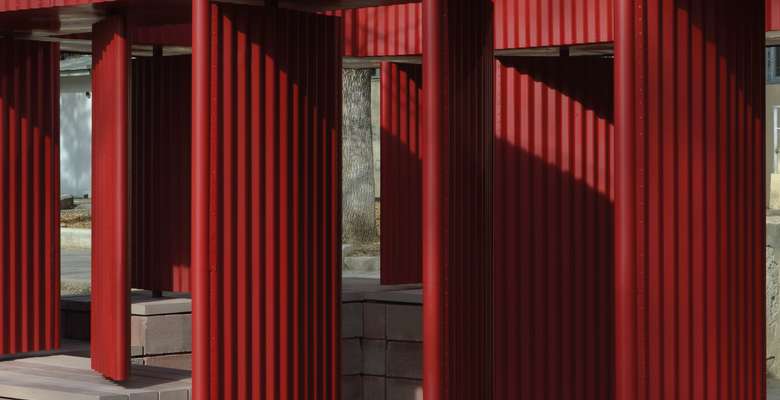
- Site-specific cases
8-23-VI prototypes an architecture that questions public-private binaries, redefining their relation as ambiguous and fluid. Commissioned as part of a collaboration with the Tbilisi Architecture Biennial, 8-23-VI uses the temporal format of the biennial to catalyse a permanent and public pavilion for the residents of entrance VI, Block 23, in the 8th district of Gldani - a Soviet-built housing district in Tbilisi, Georgia.
8-23-VI extends the threshold between Block 23’s semi-private circulation space and the surrounding public realm, reactivating it as a common ground for collective use. A continuous surface of rotating panels allows the pavilion to be transformed from a private room - an extension of the block’s domestic spaces - to a more open and negotiable public territory. 8-23-VI is attuned to its specific site, but looks towards an architectural strategy that holds a wider relevance - by contesting norms of ownership and individuality in favour of commonality.
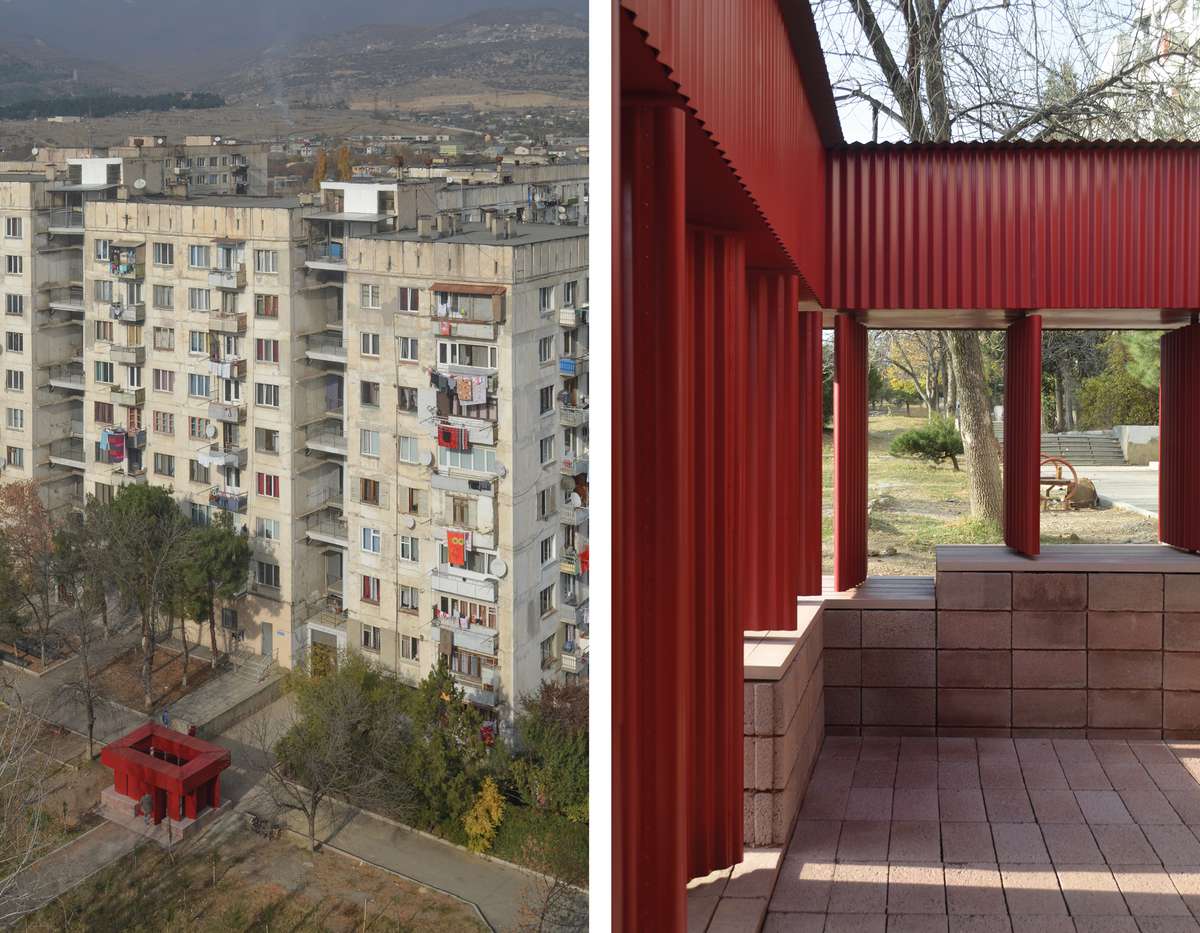
8-23-VI connects the semi-private circulation space of Block 23 with the surrounding public realm, extending and activating the threshold between them. Photographs - Benjamin Wells
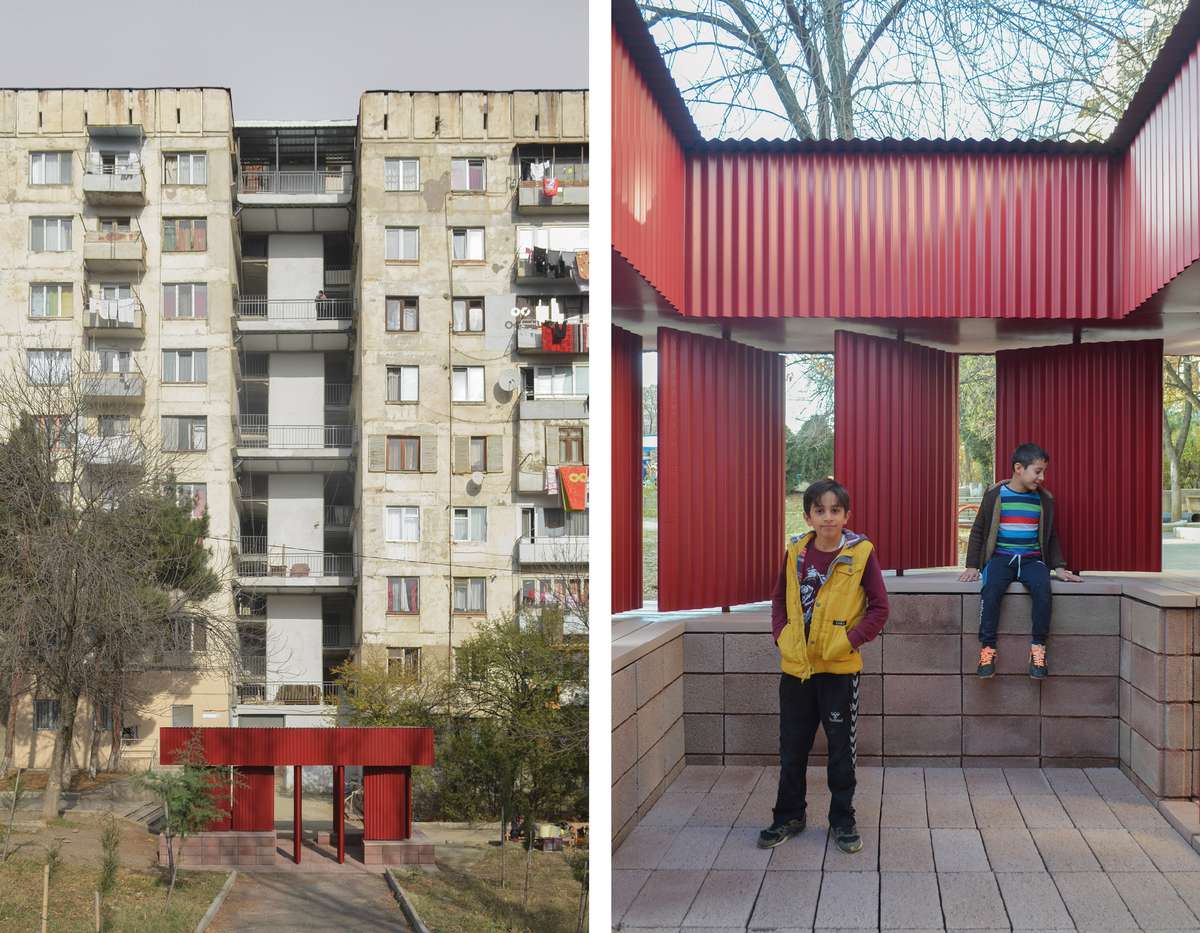
In the context of Gldani’s planned but since neglected public realm, the project re-activates this space as a common ground for collective use. Photographs - Benjamin Wells
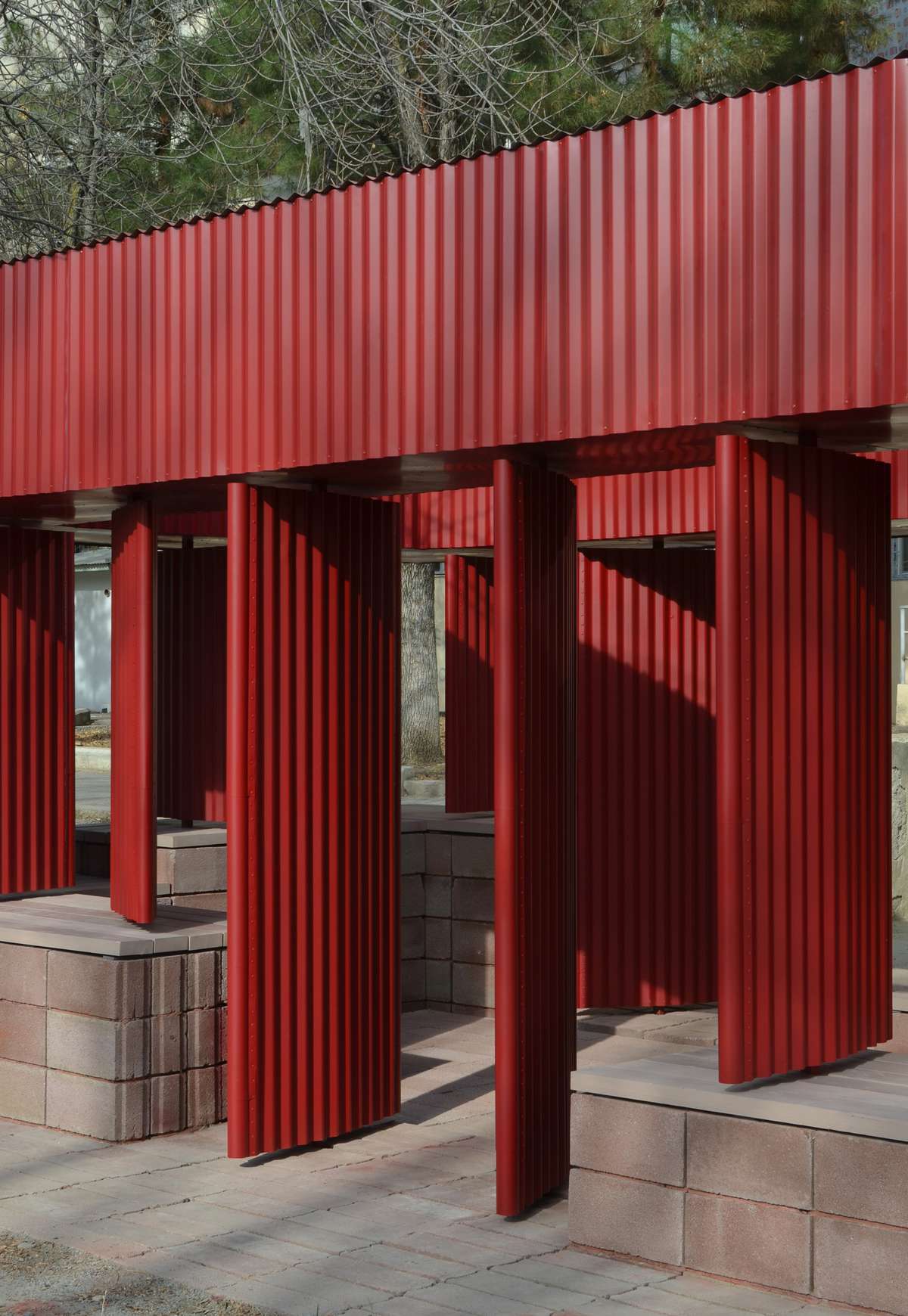
A continuous surface of rotating panels allows the pavilion to transform between a private room - an extension of the block’s domestic spaces - and a more open and fragmented threshold. Photographs - Benjamin Wells
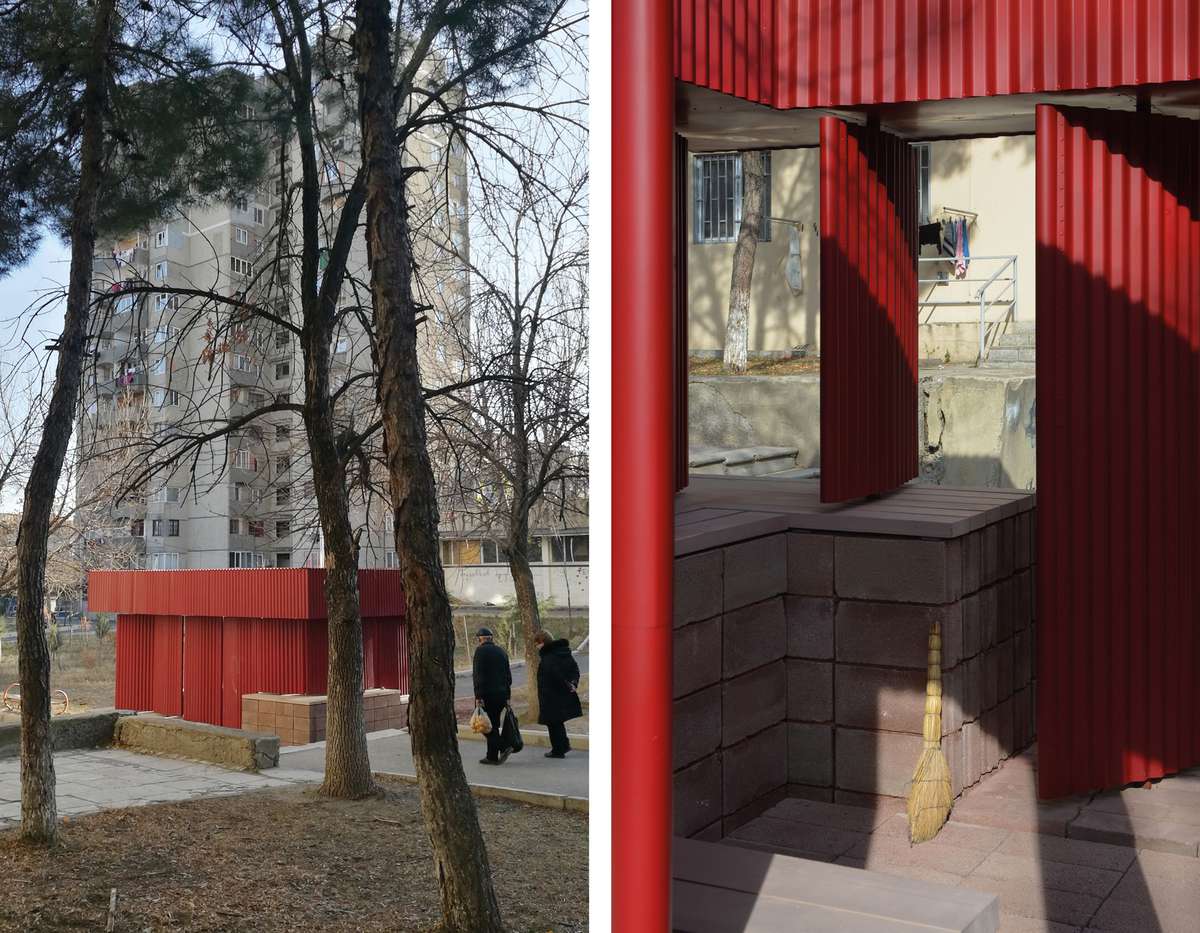
The pavilion’s folding walls redefine the relationship between public-private as ambiguous and ever-changing. Photographs - Angus Leadley Brown (L) / Benjamin Wells (R)
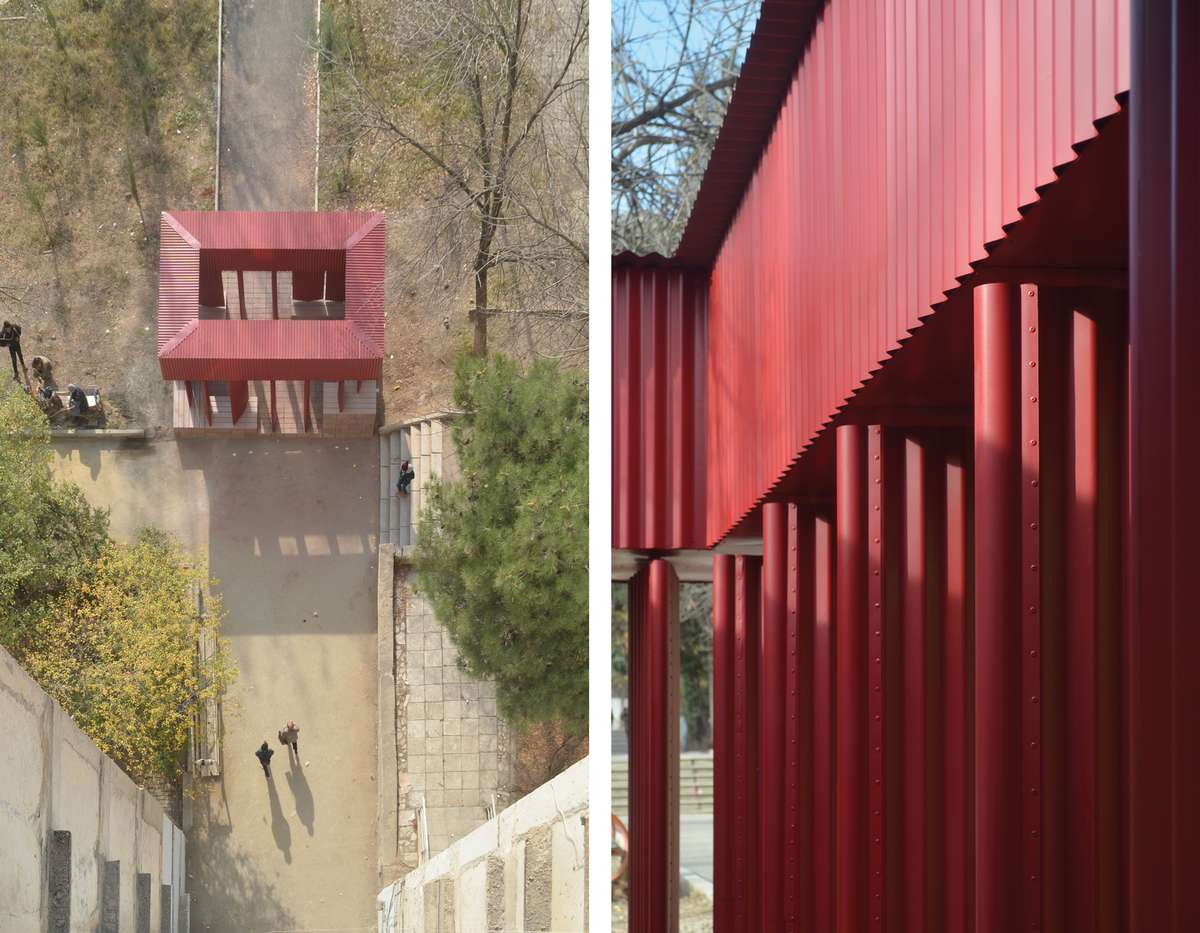
8-23-VI establishes a new common ground for the residents of Block 23, with an architectural medium that embraces transformation and collective use. Photographs - Benjamin Wells
8-23-VI
8-23-VI

- Site-specific cases
8-23-VI prototypes an architecture that questions public-private binaries, redefining their relation as ambiguous and fluid. Commissioned as part of a collaboration with the Tbilisi Architecture Biennial, 8-23-VI uses the temporal format of the biennial to catalyse a permanent and public pavilion for the residents of entrance VI, Block 23, in the 8th district of Gldani - a Soviet-built housing district in Tbilisi, Georgia.
8-23-VI extends the threshold between Block 23’s semi-private circulation space and the surrounding public realm, reactivating it as a common ground for collective use. A continuous surface of rotating panels allows the pavilion to be transformed from a private room - an extension of the block’s domestic spaces - to a more open and negotiable public territory. 8-23-VI is attuned to its specific site, but looks towards an architectural strategy that holds a wider relevance - by contesting norms of ownership and individuality in favour of commonality.
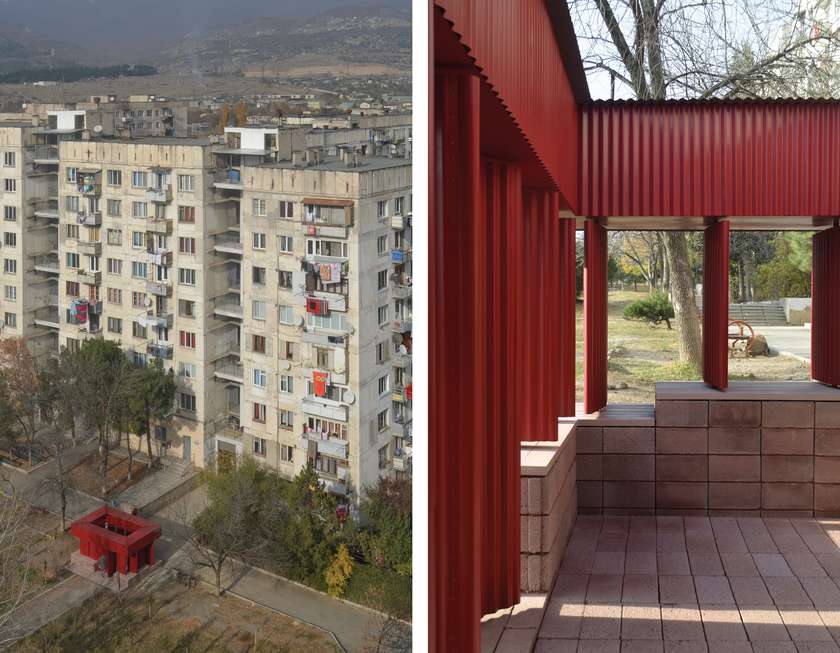
8-23-VI connects the semi-private circulation space of Block 23 with the surrounding public realm, extending and activating the threshold between them. Photographs - Benjamin Wells
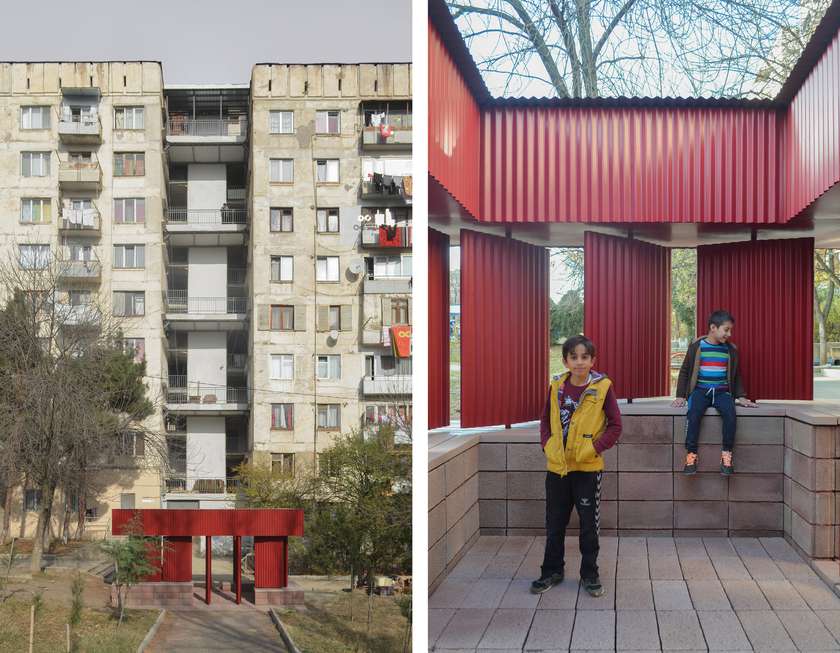
In the context of Gldani’s planned but since neglected public realm, the project re-activates this space as a common ground for collective use. Photographs - Benjamin Wells
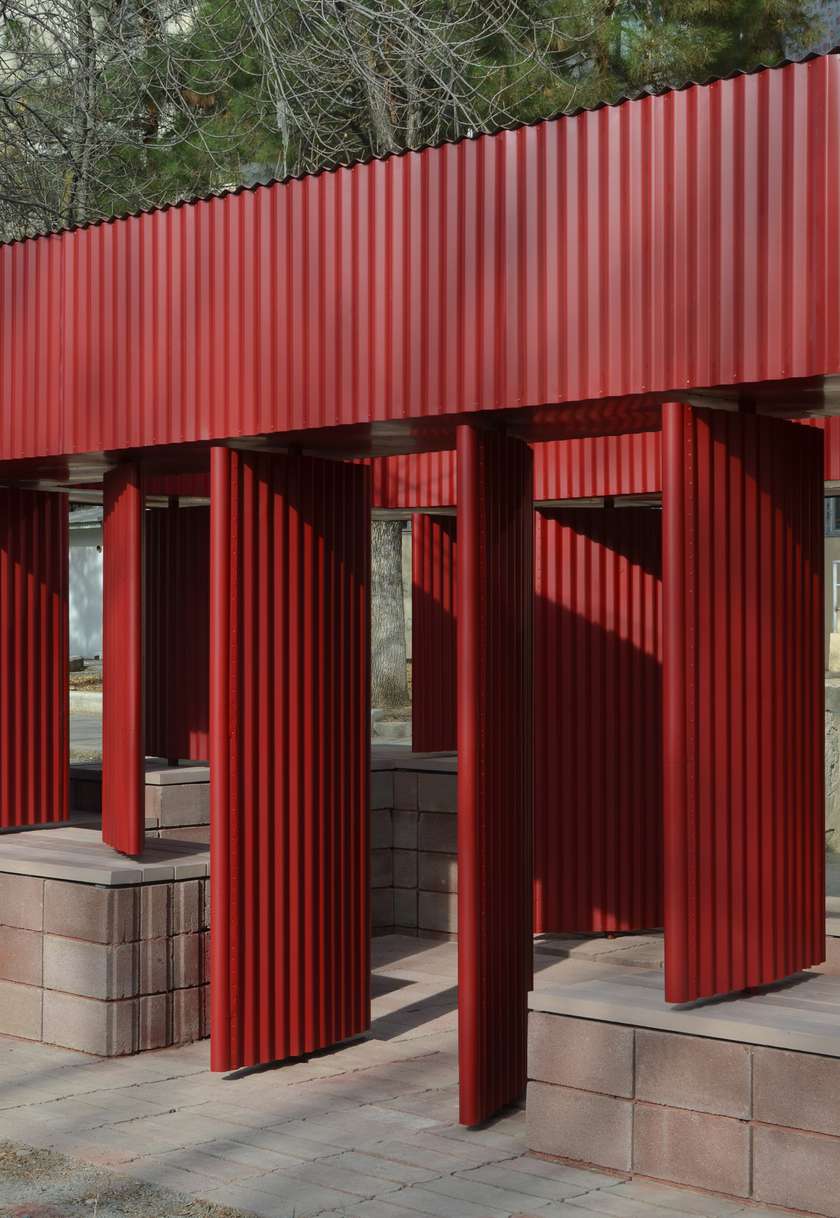
A continuous surface of rotating panels allows the pavilion to transform between a private room - an extension of the block’s domestic spaces - and a more open and fragmented threshold. Photographs - Benjamin Wells
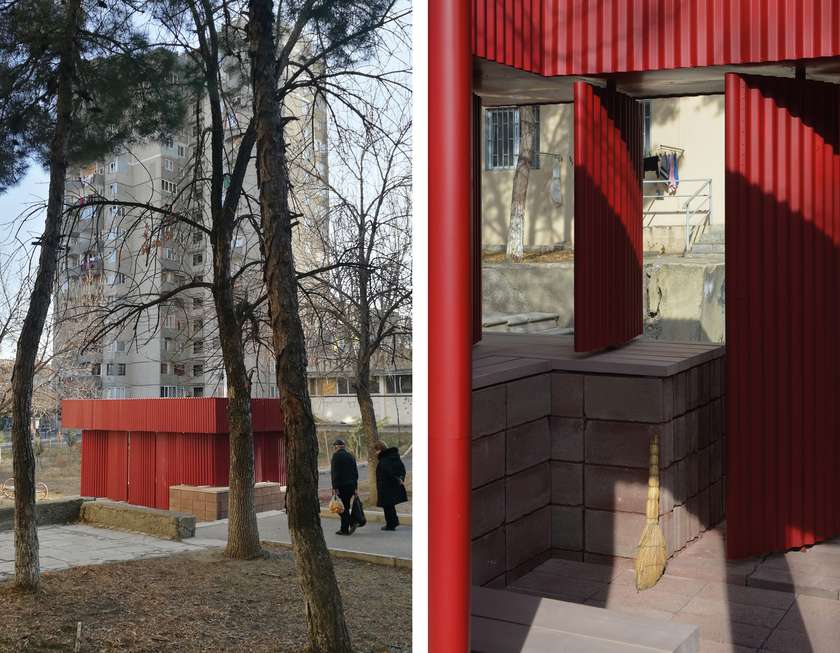
The pavilion’s folding walls redefine the relationship between public-private as ambiguous and ever-changing. Photographs - Angus Leadley Brown (L) / Benjamin Wells (R)
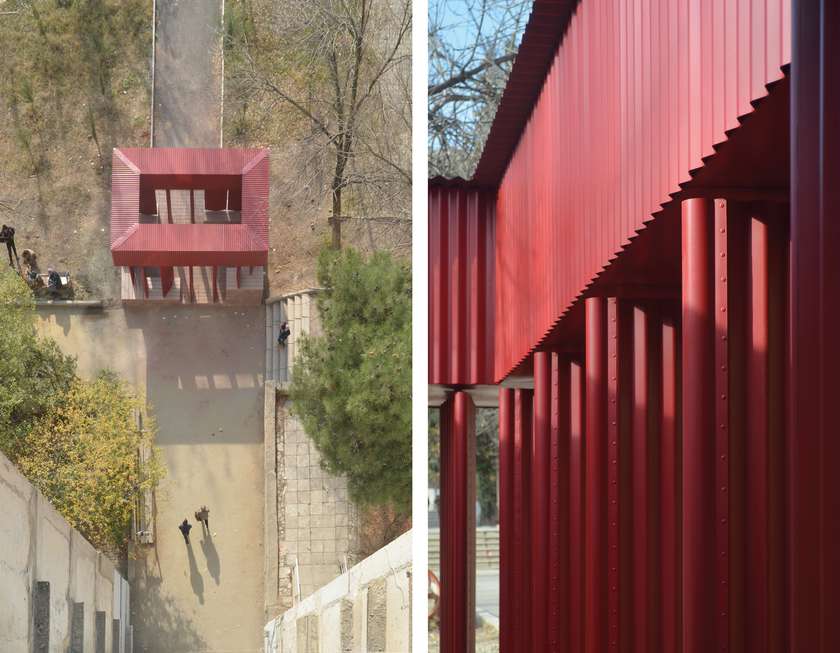
8-23-VI establishes a new common ground for the residents of Block 23, with an architectural medium that embraces transformation and collective use. Photographs - Benjamin Wells